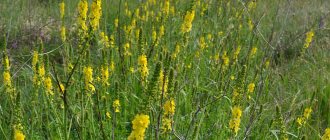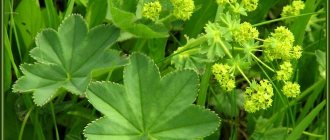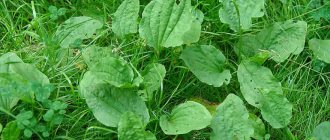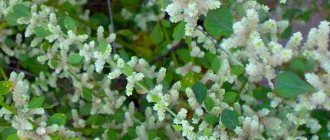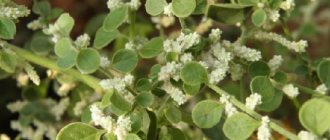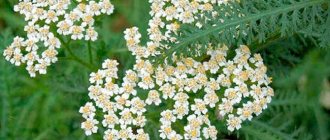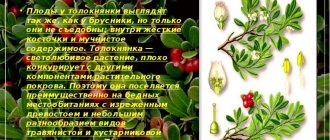Sweet clover (burkun, chrestovik) is a herbaceous biennial plant of the Legume family. It grows in Central Asia, Russia, Europe, South America, Ukraine, and in the steppes of the Caucasus. This is an unpretentious plant that tolerates drought well. It grows wild in ravines, forest edges, roadsides, wastelands, and meadows.
The name “clover” comes from the Greek words “lotus” - fodder grass and “chalk” - honey. The plant has a pronounced coumarin odor. This is a good honey plant and a valuable fodder crop.
Currently, there are 22 species of sweet clover. Among which, the medicinal burkun provides the greatest value for human health. It is used in the food and medical industries.
Interestingly, sweet clover improves soil structure and is used to flavor tobacco and flavor soap. In addition, it has a beneficial effect on the human body: it has anticonvulsant properties, lowers blood pressure, and eliminates respiratory diseases. The herb is indicated for use by people suffering from neurasthenia, insomnia, migraines, hypertension, angina pectoris, and cardiospasms.
Description of appearance
Photo: Yandex.Pictures
The plant has an erect, woody stem in the lower part with a height of 30 to 150 centimeters. The stem of sweet clover branches almost from the base. The root is taproot and has numerous lateral roots.
The leaves are alternate, long-petiolate, trifoliate. The leaves are oblong-ovate in outline, with serrate-toothed edges. The leaves are bluish-green above and paler below.
The flowers are small, collected in multi-flowered racemes up to 7 mm long, with a yellow moth-type corolla of five petals of different sizes. The inflorescences are located in the axils of the upper leaves on long peduncles. There are ten stamens, nine of them are fused into a tube surrounding the ovary.
Sweet clover blooms from June until autumn. The fruits ripen as the plant blooms from July to October. The fruit is a transversely wrinkled brown bean. Each bean contains one, rarely two, dull greenish-yellow seeds.
During its life, sweet clover can produce up to 17 thousand viable seeds. Beans require high soil moisture to germinate, so the seeds do not germinate well during a dry, hot spring.
Growing
Agricultural technology
Sweet clover is a mesoxerophytic plant of the steppe and forest-steppe zones; rises to the middle mountain zone, rarely - almost to the subalpine. Thanks to its well-developed root system, penetrating to a depth of 2 m, it can extract water from deep soil horizons. Drought and cold resistant. It grows well on chernozems, chestnut, soddy-podzolic and gray forest soils, but can also settle on low-humus, rocky, loamy and sandy soils. Does not tolerate excess moisture well.
In natural vegetation it occurs scatteredly, more often in disturbed areas, in dry and steppe meadows (sometimes solonetzic). It grows scatteredly in steppes, sparse light forests, along forest edges, dry slopes of ravines and ravines. It is not a specific weed, sometimes it even becomes a malicious weed. It is most often found in fallows and is part of the chamomile-bluegrass-wormwood and wormwood-bluegrass groups of fallow vegetation. On young fallow lands it sometimes forms thickets with an area of several tens or even hundreds of hectares. Often found in forest belts, especially young ones, in wastelands and along roadsides.
Sweet clover officinalis. Teberda Nature Reserve. On fallow lands and steppe slopes, 1300-1900 m above sea level.
Reproduction
Propagated by seeds. Good development of sweet clover is observed with sufficient spring precipitation, which promotes the germination of its seeds and the rooting of seedlings. In the first year of life, it develops only green mass and a root system, which dies in the fall. The root collar overwinters with renewal buds that can withstand frosts down to -48° even in snowless winters (9). In the second year, the regrowth of sweet clover begins in early spring. Flowering is extended, lasting about 2 months.
Varieties
Along with sweet clover, other types of sweet clover are often found. About 20 species of this plant are known. 11 grow in Russia.
Along with the medicinal sweet clover, the tall sweet clover, Melilotus altissimus Thuill, was also allowed for use in scientific medicine. This is a biennial plant with a thick tap root. The beans are vaguely reticulate-wrinkled due to the presence of anastomosing veins, pendulous, with sparse hairs, ovate-rhombic, compressed along the ventral suture, with 1-2 seeds. Tepals fall off during fruit; the flowers are yellow, large, up to 7 mm long, the calyx is pubescent. Stipules entire, subulate; brushes are dense, multi-flowered.
Sweet clover has a European type of habitat. B is found mainly in Ukraine (Middle Dnieper, Upper Dniester and Carpathian floristic regions) and in Moldova. In Russia, it is noted as an alien plant in a number of regions of the Volga region, in the vicinity of St. Petersburg and Barnaul. Grows in wet meadows and pastures, in areas with disturbed turf. Due to its rare distribution, it is almost never harvested.
Not used in scientific medicine. White clover—Melilotus albus Medik. It is distinguished by white flowers and entire subulate-shaped stipules. Serrated clover - M. dentatus Pers. has small pale yellow flowers, narrowly lanceolate, widened at the base, and incised-toothed stipules. To the east of the Yenisei, sweet clover is replaced by sweet clover - M. suaveolens Ledeb. It is distinguished by light yellow flowers, smaller, vaguely reticulate-wrinkled beans, and a stronger aroma.
Where does sweet clover grow?
Sweet clover is a Eurasian plant; it is widespread in the European part of Russia, Belarus, Ukraine, Crimea, the Caucasus and Central Asia. The plant is found in almost all regions of the European part of Russia and southern Siberia.
Medicinal clover is found in fields, meadows, along roads, among bushes, along the slopes of ravines, along ravines, in young plantings and on the edges of forests. Rubble and sandy wastelands are a common place for sweet clover; it can form thickets on railway embankments and sandy ponds.
Sweet clover is a pioneer of overgrowing areas. Thanks to the nitrogen-fixing microorganisms that live on its roots, it can grow on the most infertile soils and substrates, including sand and gravel.
Medicinal clover medicinal properties
The beneficial and medicinal properties of any plant are determined by its chemical composition. Coumarin, coumaric and melilotic acid were found in the herb sweet clover.
The main active ingredient of sweet clover is melilotin, from which coumarin is formed during drying and enzymatic digestion. Sweet clover also contains saponins, tannins, flavonoids, and mucus.
A small amount of essential oil is found in the flowers. The herb of the plant contains dicumarol, a special substance that prevents blood clotting. The flowering tops of sweet clover (flowers and leaves) are used as medicinal raw materials.
The healing properties of drugs from sweet clover have been confirmed experimentally, but in Russian scientific medicine, sweet clover is used extremely little.
Peculiarities
Sweet clover is an excellent forage plant, containing many useful substances and is a very nutritious biomass for animals. Sweet clover is also specially planted as green manure, as it improves the soil and saturates it with nitrogen.
Due to the fact that the smell of sweet clover resembles the smell of freshly mown hay, it is actively used in the perfume industry and as a specific fragrance in soap and tobacco.
And also sweet clover is an excellent honey plant; the honey from it is amber in color and very aromatic.
Use of sweet clover
White sweet clover raw material can also be used for medicinal purposes. The plant differs from its counterpart in having white flowers.
Sweet clover smells strongly of coumarin, the smell intensifies when the above-ground parts of the plant are dried. Previously, dry raw materials were ground into powder and mixed with smoking and snuff tobacco.
The smell of sweet clover can repel moths, so dry grass is often placed in closets where fur coats and woolen items are stored.
In some areas, sweet clover is used as a spice. Fresh leaves and dry powder of crushed leaves are seasoned in soup, okroshka and added to salads. Sweet clover is used as a flavoring agent in the alcoholic beverage, tobacco and perfume industries.
What's special about grass
Sweet clover grows wild. This is an excellent forage crop, soil amendment and high-quality honey plant. Today, the medicinal qualities of the herb are especially valued, so in many places in the world the plant is specially grown and new varietal species are bred.
Types and varieties of sweet clover
The medicinal plant has more than 50 species. The most common are yellow, white and medicinal sweet clover. In addition to those listed above, annual and perennial varieties were cultivated.
White clover
The white variety is no less in demand than the yellow one. The plant crop is not afraid of hot weather; it is cultivated for silage and as feed for livestock.
The plant blooms in the summer season, blooms later than yellow sweet clover, but the color lasts longer, about 30 days.
Delicious honey is prepared from the plant; it produces a huge amount of nectar product in dry, hot weather.
If a plant crop is used for feed, it is necessary to comply with the agrotechnical requirements for cultivating grass, and monitor the condition of animals, since often, poor storage or spoilage can cause the death of livestock.
You can get more than 450 kg/ha of honey, the weight gain of the hive is approximately 3.9 kilograms.
White clover
Yellow clover
A biennial that grows well in the south of the country. It is not afraid of dry weather, has great endurance and tolerates the cold well.
The color is June, the flowers are bright yellow, densely arranged in baskets.
Sowing provides approximately 135 g/acre. Honey from 1 hectare 0.5 tons. From a hive 4.2 kg/day. As reviews have shown, yellow sweet clover is better suited for alternative medicine than other types.
Yellow clover
Habitat
This grass grows in the steppe and forest-steppe. You can find sweet clover throughout Europe. Loves the south, warm climate, Asian, Caucasian regions.
In our country it can be observed even in the west of Siberian territory.
A larger number of varieties grow in Ukraine. The plant is found in the American and New Zealand regions.
White and yellow sweet clover: what is the difference
In fact, there are much more types of plant crops, but white and yellow are the most in demand in Russia. The officially recognized medicinal plant is yellow sweet clover. The white variety can also be found in alternative medicine formulations for the same indications. White sweet clover, like yellow one, is a good honey plant.
Yellow clover
White clover
Medicinal properties of sweet clover
The main area of application of the plant is the treatment of vascular spasms and hemorrhoids. There are medications that are taken orally, as well as ointments containing sweet clover powder as an active ingredient.
Medicines are taken internally for chronic venous insufficiency, feeling of pain and heaviness in the legs, night cramps in the calves, itching and swelling, as well as for the prevention of thrombophlebitis, treatment of post-thrombotic syndrome, hemorrhoids and lymphostasis.
- Infusion and decoction of sweet clover has anti-inflammatory, antispasmodic, emollient, expectorant, and wound-healing effects. It is often used as an analgesic and sedative for increased nervous excitability and headaches.
- In folk medicine, sweet clover is used to treat hypertension, climatic neurosis, and neurasthenia.
- Preparations based on sweet clover are used as a carminative, used in the treatment of cystitis, and for pain in the abdomen and bladder.
- Sweet clover prevents the formation of blood clots and also accelerates their dissolution.
- Preparations of sweet clover improve blood circulation in the myocardium and abdominal organs, reduce blood clotting, accelerate the regeneration of liver cells, and have anticonvulsant properties.
- Sweet clover is included in medicinal preparations for the treatment of rheumatism.
Traditional medicine uses decoction and infusion of the plant to treat bronchitis, bronchial asthma, heart pain, inflammation of the ovaries, scanty and painful menstruation. Recipes for decoctions and infusions are a good remedy for swelling, as well as a sedative for insomnia, migraines and flatulence.
Preparations of sweet clover in folk medicine can be used externally: an irritating, distracting and emollient agent for compresses, baths, and rinses.
Crushed herbs or dry herbs steamed in boiling water help treat purulent wounds, abscesses, boils, purulent skin lesions, mastitis, cracked nipples, and inflammation of the eyelids.
Precautionary measures
Sweet clover is a poisonous plant. When taking drugs orally, you must be careful. High doses cause headache, nausea, vomiting, and drowsiness.
Very high doses of sweet clover-based drugs can cause liver damage and hemorrhages. Poisoning can occur due to improper drying and storage of raw materials. When stored in high humidity conditions, dicoumarin is formed in the raw material, which provokes hemorrhages.
To prevent sweet clover poisoning, you should strictly follow the dosage of medications and properly dry and prepare the raw materials.
Contraindications, possible harm
Contraindications: individual intolerance and allergy to herbs of the legume family. The sweet clover plant is dangerous in the presence of the following conditions:
- Hypotension. Sweet clover is able to reduce blood pressure to critical levels.
- Exacerbation of urolithiasis. The grass accelerates the removal of fluid and can cause blockage of the ducts due to the active movement of deposits.
- Blood clotting disorder. Herbal remedies can lead to internal bleeding and impede wound healing.
Sweet clover causes harm to humans in case of overdose and violation of the application regimen. Side effects:
- tremor of the limbs;
- dizziness;
- loss of consciousness;
- nausea, vomiting;
- central nervous system paralysis;
- internal bleeding.
The use of herbal remedies should be stopped a month before the planned operation. The use of sweet clover cannot be combined with the use of anticoagulants.
Traditional treatment recipes
Anti-inflammatory recipe
Take a tablespoon of sweet clover herb and pour a glass of boiling water. Let it brew for one hour, strain. Use 1/4 cup 3 times a day before meals.
Infusion for hypertension and headaches
This infusion also helps with insomnia and irritability. Take 2 teaspoons of sweet clover herb and pour 1.5 cups of boiled water at room temperature. Leave in a sealed container for 4 hours. Take 1/2 cup 2 times a day.
Decoction for headaches
For headaches, take a teaspoon of sweet clover herb and hop cones. Pour a glass of water and boil for 5 minutes, let it brew for an hour, strain. Take 1/4 cup 3 times a day before meals.
Decoction for the treatment of cystitis
This decoction recipe is for internal use. Take 2 teaspoons of dry crushed herb, pour a glass of boiling water in an enamel bowl. Close the lid and heat in a water bath for 15 minutes. Cool, strain and squeeze out the raw materials, add boiled water to the resulting infusion to 200 ml. Drink 1/3 glass 3 times a day.
Flower tea
Tea made from sweet clover flowers helps relieve muscle pain due to colds: 30 grams of flowers per 100 ml of water. Take one glass of this infusion every hour.
Treatment of sore throat
For sore throat in children, a compress of sweet clover grass on the neck helps. Before the procedure, be sure to wash your neck with hot water and soap to keep the skin pores clean. Place chopped dried herbs with flowers in a small linen bag and place in boiling water. Leave for 3 minutes, then cool slightly and wrap this bag around the child’s throat. Tie wax paper and a towel on top. Keep the compress for one hour.
Infusion for joint pain
Take 2 tablespoons of herb and pour 1/2 liter of water. Infuse in a closed container on a hot stove for 10 minutes. Use the infusion for baths and compresses.
Treatment of boils and joint inflammation
Prepare an ointment from equal parts of sweet clover inflorescences and butter. Flowers steamed in boiling water can be used for compresses for boils and pustular skin lesions. Sweet clover herb, boiled in vegetable oil, accelerates the ripening of boils.
Infusion for the treatment of ovarian inflammation
Take equal amounts of sweet clover herb, centaury umbelliferum, oregano, and coltsfoot flowers. Grind and mix the raw materials, take a tablespoon of the mixture and pour a glass of boiling water. Leave for 3 hours, strain and take 1/3 cup 5 times a day for three weeks.
Sweet clover honey
This is a natural dietary product that has an antiseptic and immunomodulatory effect. Sweet clover honey owes its beneficial properties to the honey plant, which absorbs biologically active substances, vitamins and microelements. A natural sugar substitute is recommended for nursing women to maintain lactation and enrich milk with nutrients. In addition, it exhibits antispasmodic effects, fights constipation, flatulence, and relieves pain during menstruation.
Honey has a resolving property, so it is useful for mastitis, lactostasis, cysts (diseases of the mammary glands) and joint tumors, arthritis, arthrosis. A sugary product from sweet clover, normalizes the activity of the immune system, improves the condition of patients suffering from autoimmune diseases, and improves peripheral blood circulation. It has a general strengthening effect and functions as a natural energy booster.
Sweet clover honey is a pale yellow or slightly greenish product that quickly becomes sugary. There is a delicate vanilla note in the aroma and taste.
Application:
- To stimulate the immune system, it is recommended to eat 25 g of sweet clover honey daily for adults and 10 g for children. After using the product, monitor your baby's reaction. If itching, redness, or irritability occurs, stop taking it.
Remember, due to the abundance of pollen, honey is a strong allergen and can cause an allergic reaction, so when introducing the product into the diet of children, be vigilant and do not exceed strictly prescribed doses. Don't risk your baby's health.
- To support the body during hypothyroid conditions, it is recommended to eat 15-30 ml of honey per day.
- To treat trachitis, pneumonia, bronchitis and laryngitis, the core of a large black radish is cut out. Place 15 ml of sweet clover honey into the resulting cavity. The root crop is left for 1.5 days. During this time, it secretes juice, which, when mixed with honey, forms a healing elixir. Take 15 ml 3 times a day 15 minutes before meals.
- To improve the condition of the skin (cleansing, eliminating excess oil, getting rid of boils, pimples and blackheads), prepare a nutritious mixture for external use. Mask ingredients: fresh cucumbers (200 g) and honey (5 ml). The green vegetable is grated, mixed with bee substrate, applied to the cleansed dermis for 15 minutes, and washed off with water. The product moisturizes, nourishes and disinfects problematic skin. To care for dry skin, an additional component is added to the composition - cream (15 ml).
Best materials of the month
- Coronaviruses: SARS-CoV-2 (COVID-19)
- Antibiotics for the prevention and treatment of COVID-19: how effective are they?
- The most common "office" diseases
- Does vodka kill coronavirus?
- How to stay alive on our roads?
Sweet clover honey should be used with caution if you are allergic to legumes, bee products, overweight, or have diabetes. When diagnosing cardiovascular pathologies, it is recommended to consult a doctor before taking it, since honey flowers contain coumarin. This compound stimulates the functioning of the pulsating organ and helps increase arterial systolic pressure.
In other cases, the product is not only harmless, but, on the contrary, useful. However, this only applies to natural sweet clover honey. When choosing a product, pay attention to its color and consistency. It should visually resemble melted butter, be almost homogeneous, candied with practically indistinguishable grains. This natural beekeeping product emits a subtle vanilla aroma. A strong smell indicates that this is a counterfeit product.
How to prepare sweet clover
Medicinal clover should be harvested in June - September. For medicinal purposes, only the tops of shoots with leaves and flowers are used. They can be cut or mowed, tied into bunches and hung to dry in the attic, shed or shed.
It is necessary to place bedding under the bunches, since spontaneous falling of the most valuable raw materials - flowers and leaves - is possible. Dried bunches should be threshed, the small flyaway mass should be used as medicinal raw materials, and large stems should be discarded.
When drying raw materials, the aroma of the plant intensifies, so there is no need to strive for quick drying. Temperatures above 35 °C for drying are undesirable. Dry raw materials have a very strong aroma, so you need to store finished raw materials in tightly closed glass or metal jars. The shelf life of dry raw materials is no more than two years.
Diseases and pests
Medicinal sweet clover is attacked by insects and plant diseases. With improper care, most often with increased watering or a long rainy period, the plant becomes sick with powdery mildew, root bacteriosis and other fungal infections. Treatment with fungicides in such cases should be carried out immediately. Maxim, Fundazol and other drugs with similar effects are used.
Another dangerous disease - yellow mosaic cannot be treated and destroys all sweet clover plantings.
Insect enemies include red bugs, weevils, grasshoppers, palomenas, and stink bugs. To combat them, you will need to spray the plant with insecticidal preparations. This cannot be done immediately before collecting medicinal raw materials.
To prevent damage by insects, the soil is treated with insecticides, and the area with sweet clover is regularly weeded.
There are varieties that are resistant to a number of diseases and weevil damage.
Powdery mildew is an enemy of plants
